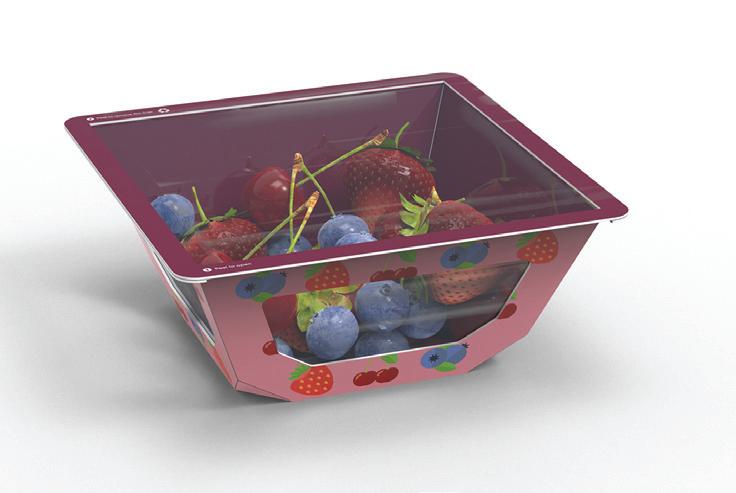
8 minute read
Cherry picking using fingerprint tech to reduce counterfeits
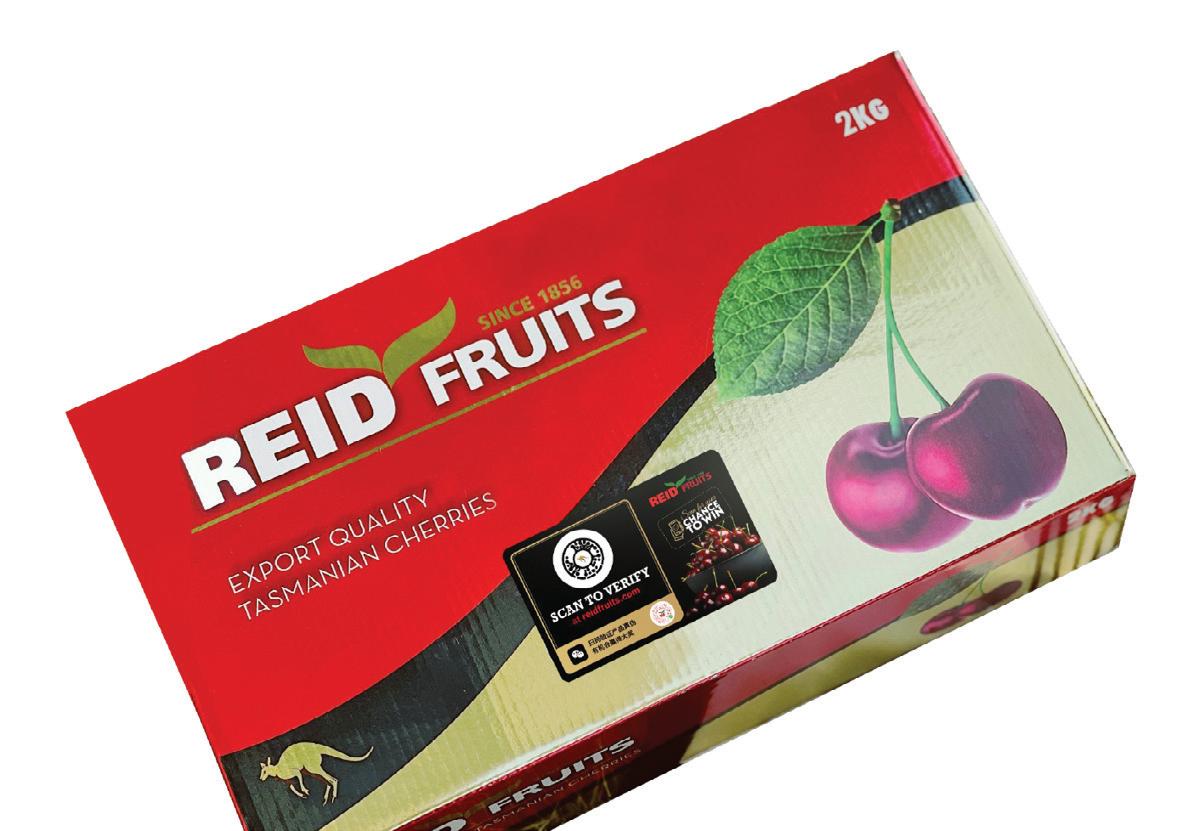

Cherry picking
Using fingerprint tech to reduce counterfeits
Tasmanian cherry grower Reid Fruits has announced a dramatic decline in product counterfeiting over the past three export seasons to Asia as a result of a Smart Fingerprint solution developed by Laava, in collaboration with digital printing specialist Peacock Bros.
“Counterfeiting is a massive issue for us, as well as for countless other Australian fresh fruit producers,” said Tim Reid, Managing Director, Reid Fruits. “The Smart Fingerprint technology offers a level of secure authentication that will make it extremely difficult for counterfeiters to replicate.”
Reid Fruits has been applying Laava’s patented Smart Fingerprint technology on its cherry boxes for 20 export markets from the 2019–20 picking season. Reid Fruits went from experiencing potentially thousands of counterfeits per season, to having 10 cases automatically stopped by the Laava platform in 2019–20, and only three in 2020–21 — a 60% reduction over the previous year.
“The fact that Reid Fruits has experienced such a dramatic decline in product counterfeiting activity demonstrates the direct benefit of the Smart Fingerprint technology. Not only does this identify instances of fraudulent activity, but counterfeiters soon realise that their actions will not go unnoticed if they try to copy Reid Fruits’ packaging to leverage their strong market reputation with a substituted and inferior product,” said Gavin Ger, Laava’s CEO.
Laava Smart Fingerprints are digitally printed by Peacock Bros using digital label printing and finishing technologies. The fingerprints use images that are uniquely generated to each individual product, and use proprietary optical scanning technology that is claimed to be more secure than a QR code. When a counterfeit cherry box is scanned by the consumer, a ‘Suspected Counterfeit’ message will be displayed on the consumer’s smartphone screen, alerting them to the product not being authentic, along with support information from Reid Fruits.
In the 2021–22 season, Smart Fingerprints were incorporated onto over 400,000 Reid Fruits cherry boxes bound for 20 global markets. A significant number of those boxes were sent to China, one of the company’s largest export markets and also the destination where the Australian business has historically encountered significant counterfeit challenges.
“Chinese consumers in particular are aware of issues associated with product counterfeiting and have a very strong appetite for product information and brand narratives that allow them to connect directly with Australian producers,” Reid said.
When consumers scan a Smart Fingerprint, they not only get a guarantee of the product’s authenticity, the digital platform also provides engaging content Reid Fruits can use to educate buyers on the product they have purchased, as well as the ability to serve up special offers and social media integration.
Peacock Bros Pty Ltd www.peacocks.com.au

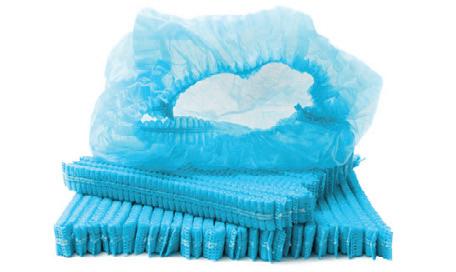



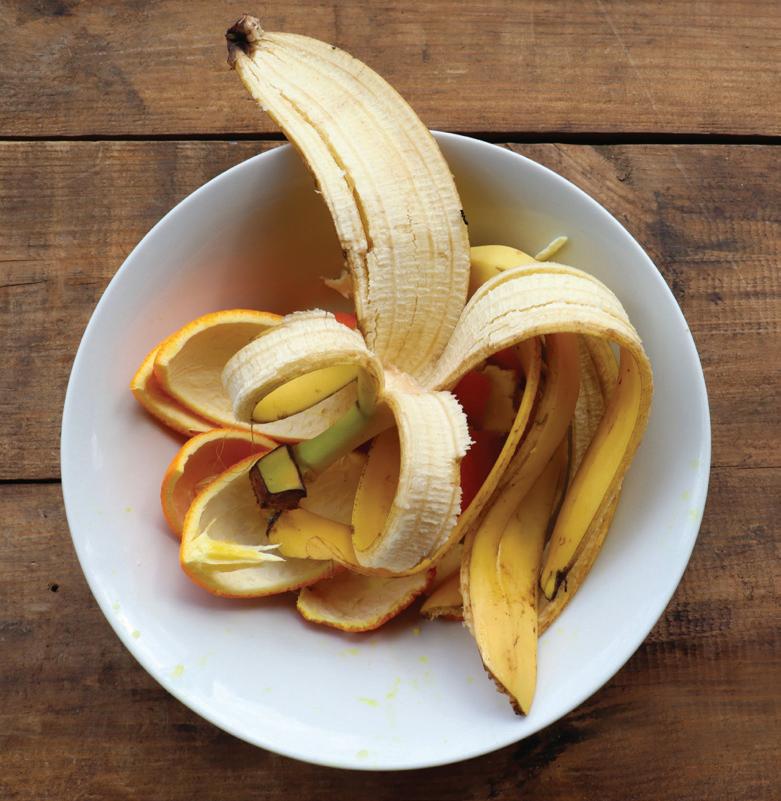
©stock.adobe.com/au/Juver
Banana peels are finding their way into more meals as consumers look for ways to reduce waste and optimise their food usage. The skins are used variously as a binder for bakers, a source of fibre, a replacement for bacon and simply as a chewy ingredient of curries and sauces.
Research has already found that banana peels can impart nutritional benefits as the skins are rich in fibre, magnesium, potassium and antioxidant compounds.
Previous studies have evaluated the use of banana peel flour in cakes and breads, finding that there were nutritional advantages to its use. Now scientists from the Aligarh Muslim University and the University of Houston have looked at how banana peel flour (BPF) can benefit cookies. Their research was published in ACS Food Science & Technology.
The researchers made the BPF themselves: they blanched, dried and ground the skins, which resulted in a fine powder to be added to a standard sugar cookie recipe. The BPF replaced varying amounts of wheat flour, with the experiment testing how consumers liked the resulting treats.
Changing the percentage of BPF (with a range of 0 to 15%) vastly changed the flavour, colour and hardness of the scientists’ cookies. The more of the flour that was used, the harder the cookie was and although the tough cookies were more nutritious, they weren’t as enjoyable for a panel of tasters.
In the end the scientists discovered that the best balance was to use 7.5% BPF. With this quantity of the flour, the cookies were still tender and supple, and had an enjoyable colour and flavour while also possessing good nutritional qualities. They also has a longer shelf life at room temperature.
The researchers said the flour could be used by manufacturers to bolster nutrition in a relatively cheap and reliable way without affecting how consumers enjoy baked products.
Salad filler
Ready-to-eat salads are popular, and changing trends in salad means recipes must continually evolve to capture consumer interest in this competitive segment. Fast, flexible systems are needed to process high-quality, salad-based meals ‘on demand’ and the relatively short shelf life of fresh salad can be a challenge.
Ishida has extensive experience in packing salad products and filling into preformed trays. Its salad solutions for preprepared salads provide good quality and high processing speeds — for even the most complex ingredient mixes.
Packing salad into trays can be a challenge because the salad leaf has a free-flowing volume or ‘bulk density’ which can be up to three times the volume of the tray. This basically means the leaf will not fit naturally into the confines of the tray, which causes it to spill over easily when it’s packed.
The Ishida Rotary Salad filler is an automatic, high-speed equipment solution — which uses state-of-the-art technology to overcome this problem — and makes packing salad easier and more cost-effective.
The equipment automatically fills salad into preformed trays at high speeds with virtually no spillage at the fill point. It can process up to 50 trays/min/lane (on all pack formats) and when combined with an Ishida combination weigher, it fills trays cleanly, efficiently and cost-effectively.
Preformed trays can be fed by hand or via an automatic denesting system. The filler fills the tray via the Ishida combination weigher and tamps (settles) the product twice to ensure it is fully in the tray. Trays are then lowered at the exit of the machine to ensure all product remains in the tray. The equipment has been designed for standard market tray sizes from 140–450 g. Trays can be narrow or wide edge leading, and the solution is suitable for tray sealing, ultrasonic sealing or shrink banding.
Heat and Control Pty Ltd
www.heatandcontrol.com

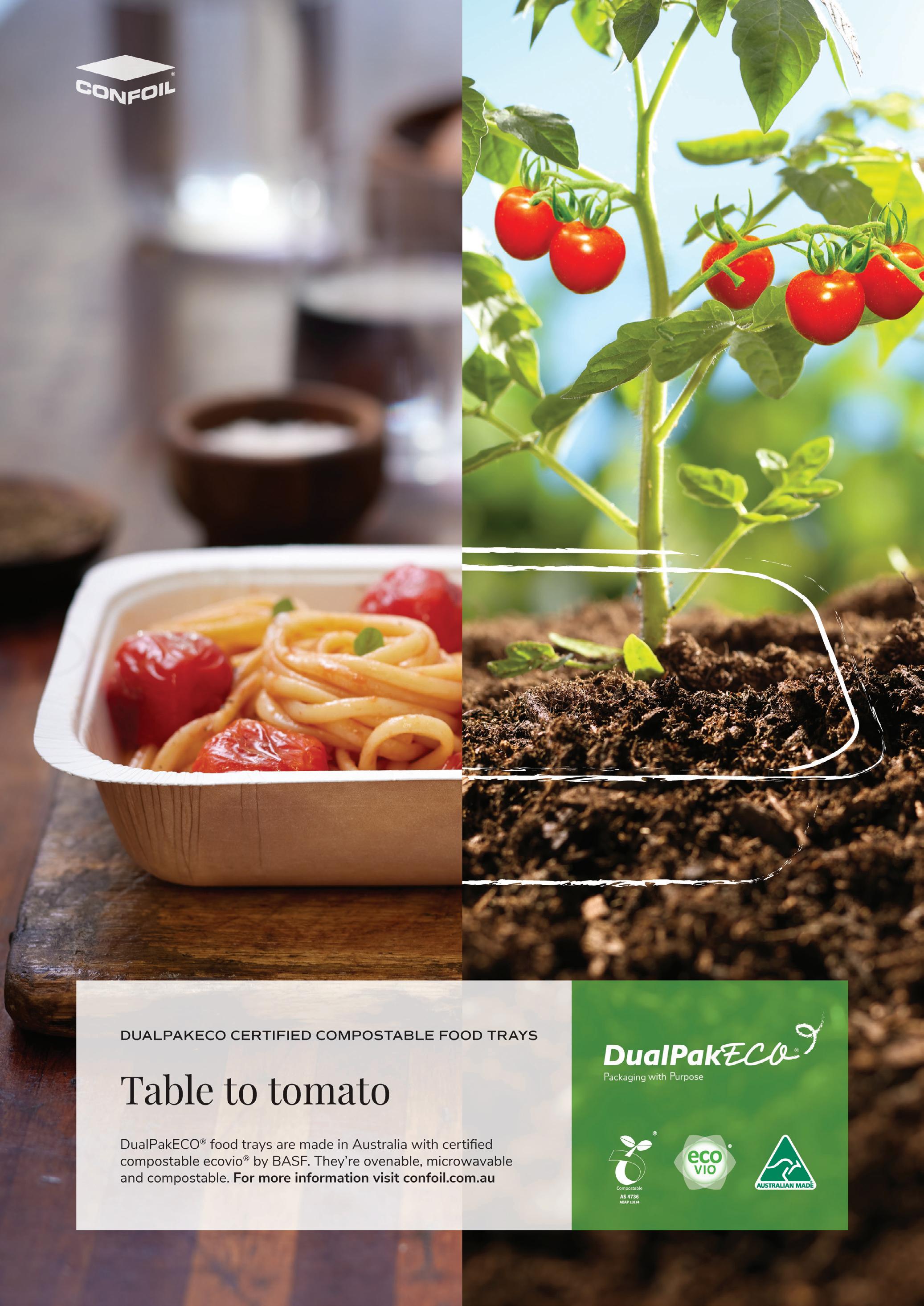
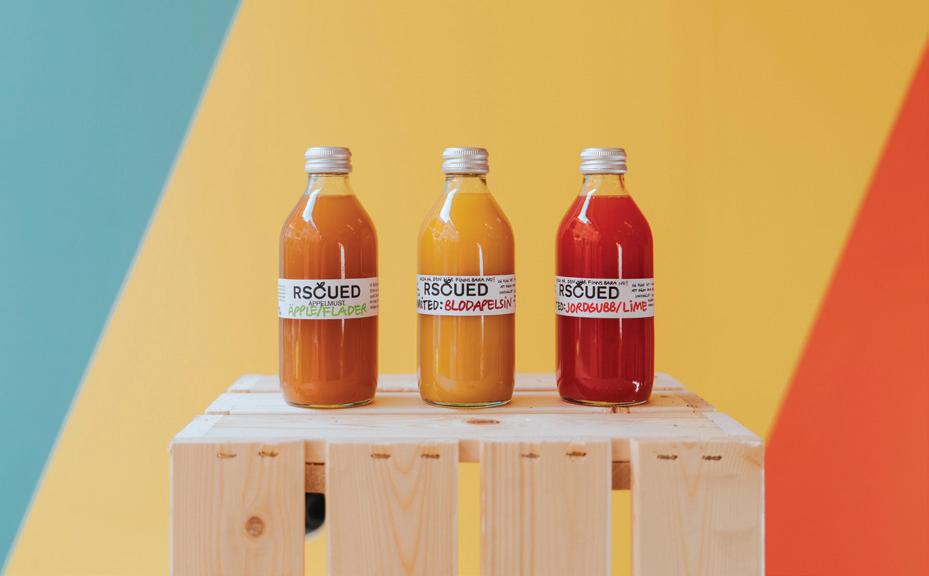
Producing juice from waste

Image: RSCUED
According to a World Wildlife Fund (WWF) study, 42% of all cultivated fruits and vegetables worldwide are thrown away every year — even though they are suitable for further processing. The Swedish company RSCUED wants to change this and has appointed itself a fruit rescuer by turning unwanted fruit into juices, chips and fertilisers.
With the help of a system from GEA, the company can quickly produce high-quality juices from raw materials that would otherwise have fallen victim to waste. It has installed the preassembled GEA vaculiq 100 vacuum juicer and the multiCrush milling system on movable skids.
According to Truls Christenson, co-founder of RSCUED: “The advantages of the GEA skid for us were the very short processing time, efficiency, high product quality and flexibility. We need to be able to respond to seasonal supply just as quickly as to fluctuating incoming goods.” This is because the company receives the fruit and vegetables sorted out for regular trade via donations from wholesalers, supermarkets, farms and delivery services. Private individuals who have larger quantities from their gardens can also participate in the fruit rescue program. The juicer with its vacuum spiral filter delivers the desired flexibility. It processes a ton of fruit or vegetables within about 20 minutes and cleaning the system between productions takes just five minutes. Different varieties can thus be turned into juice in quick succession. And it does so with maximum yield: in the first test phase, the company was able to produce twice as much juice compared to its previously used press. With a capacity of up to 1800 L/h, it is now able to easily increase its production in the future thanks to the technology.
With this juicing method, the products do not come into contact with oxygen, and the gentle process can preserve healthy vitamins and secondary plant nutrients.
The dry mash discharged by the vaculiq plant during the production process, together with remaining rejects, is ideally suited as a basis for fertiliser — which can then promote the growth of new fruits and vegetables.
“GEA’s overall concept is therefore an innovative and unique solution for us in the field of sustainable, industrial juice production,” Christenson concluded. GEA Group www.geagroup.com.au
Image: RSCUED
Sustainable packaging trays
Food packaging that delivers optimal barrier performance and high-impact branding while still being sustainable has traditionally proven to be a difficult balancing act. Fibre-based consumer packaging company Graphic Packaging International has introduced a sustainable solution that solves this problem for the food industry with its range of PaperSeal trays.
PaperSeal is a barrier-lined paperboard alternative to MAP and VSP trays, developed in partnership with tray sealing specialist G. Mondini, that has been designed to ensure perishable products stay fresh.
Suitable for packing salads, prepared fruit, cheese, fish, meats, chilled meals and more, the tray is claimed to use up to 90% less plastic than traditional trays.
The liner is easily separated from the board after use, enabling the paperboard portion of the tray to be recycled, contributing to the circular economy.
The trays can be supplied pre-formed or flat, the latter reducing transport costs, emissions and storage space.
The multi-award-winning tray has been adopted by Woolworths for its grass-fed beef packaging, and the retailer won a Special Award in Sustainability at this year’s WorldStar Global Packaging Awards.
The solution is available in MAP, VSP and dual-ovenable formats.
Graphic Packaging International Australia Pty Ltd
www.graphicpkg.com
